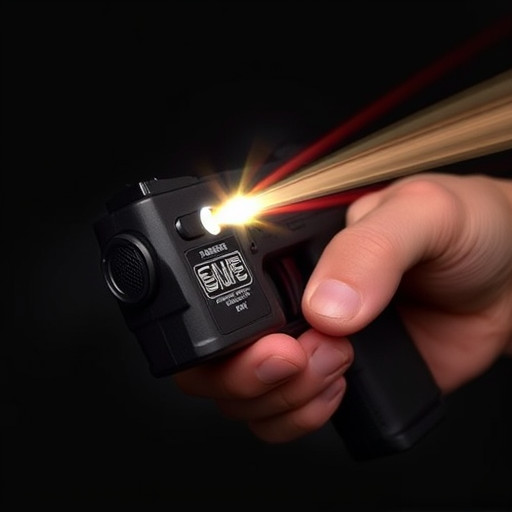The Triad Stun Gun is a powerful non-lethal weapon that uses three prongs to deliver electric shocks, disabling targets quickly through neuromuscular disruption. While effective for close-quarters combat and self-defense, these weapons pose significant risks including cardiac issues and nerve damage, necessitating careful regulation and justified use, especially in law enforcement hands. The growing popularity sparks debates around legalities and ethics, with strict regulations in many jurisdictions to prevent misuse and potential harm to bystanders or those with medical conditions.
“Discover the powerful Triad Stun Gun, a handheld electrical weapon designed for personal defense. This comprehensive guide explores its unique capabilities, offering an in-depth look at how it uses debilitating electrical charges to subdue attackers. From weapon specs and effectiveness to legal considerations and ethical debates, this article provides crucial insights into the triad stun gun’s role in modern self-defense strategies.”
- Understanding the Triad Stun Gun: A Comprehensive Overview
- Debilitating Electrical Charge: Weapon Effectiveness and Risks
- Legal Considerations and Ethical Implications of Stun Guns
Understanding the Triad Stun Gun: A Comprehensive Overview
The Triad Stun Gun is a powerful non-lethal weapon designed to incapacitate targets through electric shock, rendering them temporarily immobilized and disoriented. This stun gun operates on a unique three-pronged approach, hence its name—the Triad. It fires a specialized high-voltage, low-current electrical pulse that disrupts the target’s neuromuscular system, causing muscle spasms and loss of balance.
Unlike traditional stun guns that rely on a single probe or bar, the Triad incorporates three distinct contacts points that simultaneously deliver the electric charge. This triple-point delivery system increases the effectiveness of the stun by focusing the electrical energy into multiple areas, ensuring a more complete and rapid incapacitation. The gun’s design also emphasizes safety features, including mechanical and electrical safeguards to prevent accidental discharge and protect users from excessive exposure to electricity.
Debilitating Electrical Charge: Weapon Effectiveness and Risks
Debilitating Electrical Charge weapons, such as the Triad Stun Gun, are designed to temporarily incapacitate targets through electric shock. The primary effectiveness lies in their ability to disrupt muscle control and cause a loss of balance, rendering the target immobile for several moments. This makes them particularly useful in close-quarters confrontations where swift disarming or neutralization is necessary.
However, these weapons also carry significant risks. Prolonged or repeated exposure to such shocks can lead to severe health complications, including cardiac arrhythmias and permanent nerve damage. Moreover, the impact on bystanders or unauthorized individuals can result in accidents and legal repercussions. Thus, while Debilitating Electrical Charge weapons offer powerful tools for law enforcement and military applications, their use must be carefully regulated and justified.
Legal Considerations and Ethical Implications of Stun Guns
The widespread availability and increasing popularity of stun guns, like the triad stun gun, have sparked significant debates regarding legal considerations and ethical implications. While some advocate for their use as personal defense tools, others raise concerns about potential misuse and unintended consequences. Many countries and regions have implemented strict regulations governing the possession and deployment of stun devices, often requiring permits or licenses and limiting their availability to authorized individuals, such as law enforcement officers or security personnel.
The ethical implications extend beyond legal boundaries. Stun guns can cause temporary paralysis and severe pain, which raises questions about their role in self-defense versus potential harm to bystanders or individuals with medical conditions. The use of force, even for defensive purposes, should be proportional and necessary; the power of a triad stun gun or similar device could lead to excessive force if not handled responsibly. As such, ongoing discussions are essential to ensure that the rights to personal safety and security are balanced against the responsibility to prevent harm.
The triad stun gun, with its potent electrical charge capabilities, presents a powerful tool for self-defense. However, it’s crucial to balance its effectiveness against potential risks and legal implications. As discussed in this article, understanding the specifics of these weapons—from their operation to their impact on human bodies—is essential. Responsible use and awareness of local regulations are key to harnessing the benefits of stun guns while mitigating their drawbacks, ensuring a safer and more informed approach to personal protection.
